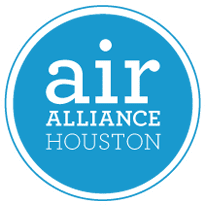AirMail - Other Permits
Open Permit Applications
NRG Texas Power LLC - W.A. Parish Electric Generating Station: Permit Amendment No. 7706A
NRG Texas Power LLC, has applied to the Texas Commission on Environmental Quality (TCEQ) for: Amendment of Permit 7706A This application would authorize installation of the Process Water Concentrator System located at 2500 Y. U. Jones Road, Thompsons, Fort Bend County, Texas 77481. This application is being processed in an expedited manner, as allowed by the commission’s rules in 30 Texas Administrative Code, Chapter 101, Subchapter J.
Immediate actions and help documents:
⚠️ ACTION: Attend a day of action and the public meeting
Thanks to all those who contacted elected officials, a meeting has been requested by Senator Huffman and Representative Lalani.
- Join us for a demonstration at Tranquility Park (across from NRG’s headquarters) on September 28 at 9am to hear from the community and our elected officials, and to present NRG executives with 500 petition signatures demanding clean air and water for our city.
- Following the demonstration, Close Parish Coal is hosting a Coffee and Change prep session at Lit Bookbar in Richmond, TX on September 28 at 12pm where you can learn more about the permitting process, engage with your neighbors, and make posters for the hearing! Click here to let us know that you will be there!
- A public meeting will be held Monday, September 30, 2024 at 7 PM at Reading Junior High School Cafeteria 8101 FM 762 Road, Richmond, TX 77469
Common Air Pollutants
Common air pollutants include particulate matter, ground-level ozone, carbon monoxide, sulfur dioxide, nitrogen dioxide, and lead. The inhalation of these pollutants has been associated with a number of health conditions, from chronic respiratory diseases to cardiovascular problems and neurological harm. Read more about the health impacts from the U.S. EPA here.
Air Toxics
Air toxics, also known as hazardous air pollutants (HAPs), are pollutants that are known or suspected to cause cancer or other serious health effects (e.g. reproductive effects or birth defects), or adverse environmental effects. Examples of air toxics include benzene, formaldehyde, 1,3-butadiene, toluene, and heavy metals like mercury and chromium. Read more about these pollutants and their health impacts from the U.S. EPA here.
In the Greater Houston area, hazardous facilities are disproportionately located in or near communities of color and with lower incomes. This industrial proximity is detrimental to resident health and is known as “double jeopardy.” In other words, communities are both impacted by toxic emissions and pollutants as well as risks of exposure to chemical accidents.

